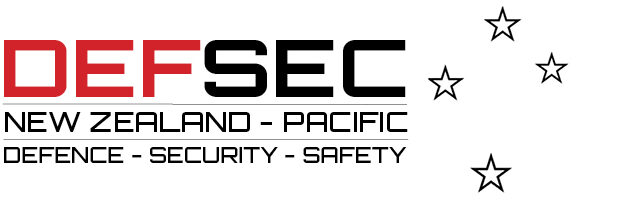
Information is fast becoming a key instrument of power wielded by states and non-state actors alike. The Ministry of Defence and NZDF have now provided insights into the nascent New Zealand information domain, writes chief editor Nicholas Dynon.
“States have become masters at exploiting the seams between peace and war,” commented General Sir Nicholas Carter, British Army Chief of General Staff, in 2018.
“What constitutes a weapon in this grey area no longer has to go ‘bang’, bribes – corrupt business practices, cyber-attacks, assassination, fake news, propaganda and indeed military intimidation are all examples of the weapons used to gain advantage in this era of ‘constant competition’…
“The deduction we should draw from this, continued General Carter, “is that there is no longer two clear and distinct states of ‘peace’ and ‘war’; we now have several forms.
Echoing this, Brigadier Mark Ascough CSC, DSM, Commander of the Australian Army’s 6th Brigade, wrote in April that to fight and win in the information domain, “the military professional must form and lead teams of multi-discipline capabilities that advise and assure commanders and decision makers, and generate effects that impacts an adversary or supports a partner during times of cooperation, competition and conflict.”
The ‘information domain’ is not a new concept within military literature, however, it is one which has been given recent urgency in what is an emerging era of ‘weaponised information’, ‘smokeless battlefields’ and constant ‘soft conflict’ characterised by a wide array of new – and often inexpensive and readily accessible – non-kinetic capabilities.
In the past year, New Zealand’s Ministry of Defence and the New Zealand Defence Force have given shape to what has been described as the ‘bespoke New Zealand information domain’.
A New Zealand Information Domain
Introduced in the Defence Capability Plan 2019, the New Zealand information domain comprises a sub-portfolio of projects defined in four distinct pillars: (i) Cyber and Electronic Warfare; (ii) Intelligence; (iii) Information Activities; and (iv) C4. According to the DCP, investments in this domain will be informed by cross-agency work on how best to deliver and resource these capabilities, and by new thinking from Industry.
Major Defence-led information domain projects currently include the Joint Intelligence Project, Cyber Security and Support Capability, Joint Electronic Warfare Project, and Fixed High Frequency Radio Refresh, with more to come. In addition to these, the NZDF will undertake a large number of small scale projects totalling over $150 million out to 2030.
At both the NZDIA July Member Meeting and the recent IDEAS 2020 virtual event hosted by the NZDIA in collaboration with Defence, the Ministry of Defence and NZDF enunciated their understanding of the new domain and what it means for Defence and industry going forward.
According to Nick Gillard MNZM, who was up until recently the Ministry’s Information Domain Director (now Director Land Domain), the last six months have been spent “defining and designing what we’re calling the Information Domain.”
Since DCP 2020, Defence has developed a strategy that defines the New Zealand Information Domain and lists the sub portfolio of projects it includes as well as a roadmap relating to the development of capabilities within the domain.
The information domains fits within the traditional five domain categorisation commonly articulated as: land, air, space, maritime and cyber. What sets it apart is that it is an enabler in relation to the other domains but it should also be capable of generating its own strategic, operational and tactical military effects. A discrete number of capabilities can therefore be grouped under this domain.
“What we’re looking for with uplifting these capabilities are new ways of doing business, new people, new skills, new technology,” said Mr Gillard at the NZDIA’s July Member Meeting.
Depending on COVID-19 impacts, and the fact that a national election is coming up, Line of Defence Magazine understands that Information Domain work is being scheduled as follows:
- February 2021: release of a new Defence Assessment, which will provide a first indicator on what the direction of travel is for the domain.
- March 2021: provision of an update of information domain timeline
- May 2021: confirmation of budget for financial year 2021.
- July 2021: opportunities will possibly start to arise for industry – with the possibility of opportunities for small-scale collaboration in the meantime.
Redesigning the operating model
GPCAPT Pete Franken, Information Domain Director, NZDF Capability Branch, will be dealing with the smaller scale NZDF-led projects. He is also responsible for structuring the NZDF – or “offering opportunities for the organisation to change” – in order to best meet the requirements of the new information domain.
Importantly, the information domain is focused on offering options for the NZDF to best shape itself to meet the foreseeable future given the rate at which information is changing the nature of international competition and conflict. For this reason, commented GPCAPT Franken, these options will need to be relevant to times of peace and competition, as well as times of conflict – a major shift in mindset.
The information domain focus is therefore part organisational design – about the shaping of the NZDF operating model. “The goal is to ensure that the Defence leaders of the future will have a broad array of military effects at their disposal,” he said. “They need to be better informed of the threats, options and constraints than our current cohort of military leaders.
The journey will involve enhanced integration of existing talent, skills and capability from the strategic level through to the tactical level and across the Defence Force.
He noted that the NZDF’s workforce is not large enough to have its own personnel across all of the specialised fields within the information domain, and that it would therefore need to look to the private sector and security sector to work more on a system of integrated systems.
The NZDF will be partnering with industry, the security sector and academia to explore all the options, which – it is hoped – would lead to the presentation of a range of options to the executive before 2020 is out. That will lead to work on a detailed business case throughout 2021.
Comment below to have your say on this article.
If you have a news story or would like to pitch an article, get in touch at editor@defsec.net.nz.
Sign up to DEFSEC e-Newsletters.







